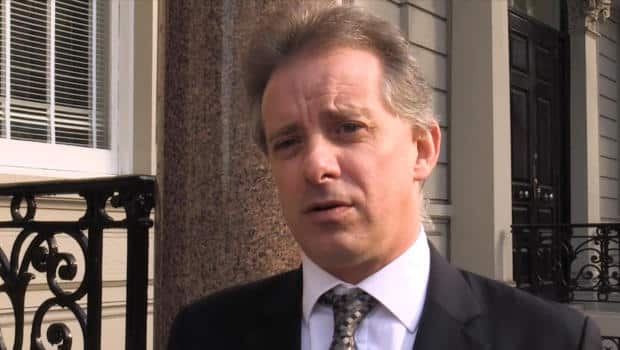
Leaving aside the validity of what has become known as the “Steele dossier,” it’s important to look at how Christopher Steele was able to guarantee that the information in it would play a significant and ongoing role in American politics.
Steele, who is British, did far more than simply provide opposition research to the Democratic National Committee. He was able to make sure it reached the most influential people possible in politics, media and government to shape and influence the growing narrative of the 2016 presidential election. In other words, as a skilled professional intelligence officer, Steele ran a full-spectrum information operation against the United States. One could even call it information warfare.
This is what separates his work creating the dossier (which a decent journalist with friends in Russia could have done) from his work insinuating the dossier into the highest reaches of American government and political society. For that, you need a real pro, an intelligence officer with decades of experience running just that kind of operation. Looking for foreign interference in the 2016 election? Let’s take a closer look at Christopher Steele.
Steele’s skill is revealed by the now familiar Nunes and Grassley memos, which show he used the same set of information in the dossier to create a collaboration loop, every intelligence officer’s dream, which is his own planted information used to surreptitiously confirm itself, right up to the point where the target country’s own intelligence service re-purposed it as evidence in the FISA (Foreign Intelligence Surveillance Act) court.
Steele admits he briefed journalists off-the-record starting in summer and autumn 2016. His most significant hit came when in September 2016, journalist Michael Isikoff broke the story of Trump associate Carter Page’s alleged connections to Russia. Isikoff did not cite the dossier or Steele as sources, and in fact denied they were when questioned.
Isikoff’s story didn’t just push negative information about Trump into the public consciousness. It claimed U.S. intel officials were probing ties between a Trump adviser and the Kremlin, adding credibility, suggesting the feds themselves felt the info was worthwhile. Better yet for Steele, Isikoff claimed the information came from a “well-placed Western intelligence source,” suggesting it originated from a third-party and was picked up by Western spies instead of being written by one.Steele, either as a source himself or via colleagues passing around his information, saw to it the dossier information reached journalists at Mother Jones, the BBC,Guardian and others. An article by Harold Blum in Vanity Fair laid it out in April of last year:
It wasn’t long before, as The New York Times would write, the memos by the former spy “became one of Washington’s worst-kept secrets, as reporters . . . scrambled to confirm or disprove them.”
At the same time, Steele’s info reached influential people like Sen. John McCain, who could then pick up a newspaper and believe he was seeing the “secret” info from Steele confirmed independently by an experienced journalist. And how did McCain first learn about Steele’s work? At a conference in Canada, via Andrew Wood, former British Ambassador in Moscow. Where was Wood working at the time? Orbis, Christopher Steele’s research firm.
A copy of the dossier even found its way to the State Department, an organization which normally should have been far removed from U.S. election politics. A contact within State passed information from Clinton associates Sidney Blumenthal and Cody Shearer (both men also played active roles behind in the scenes feeding Clinton dubious information on Libya) to and from Steele. The Grassley memo suggests there is was a second Steele document, in addition to the dossier, already shared with State and the FBI but not made public.
Read the rest here.

